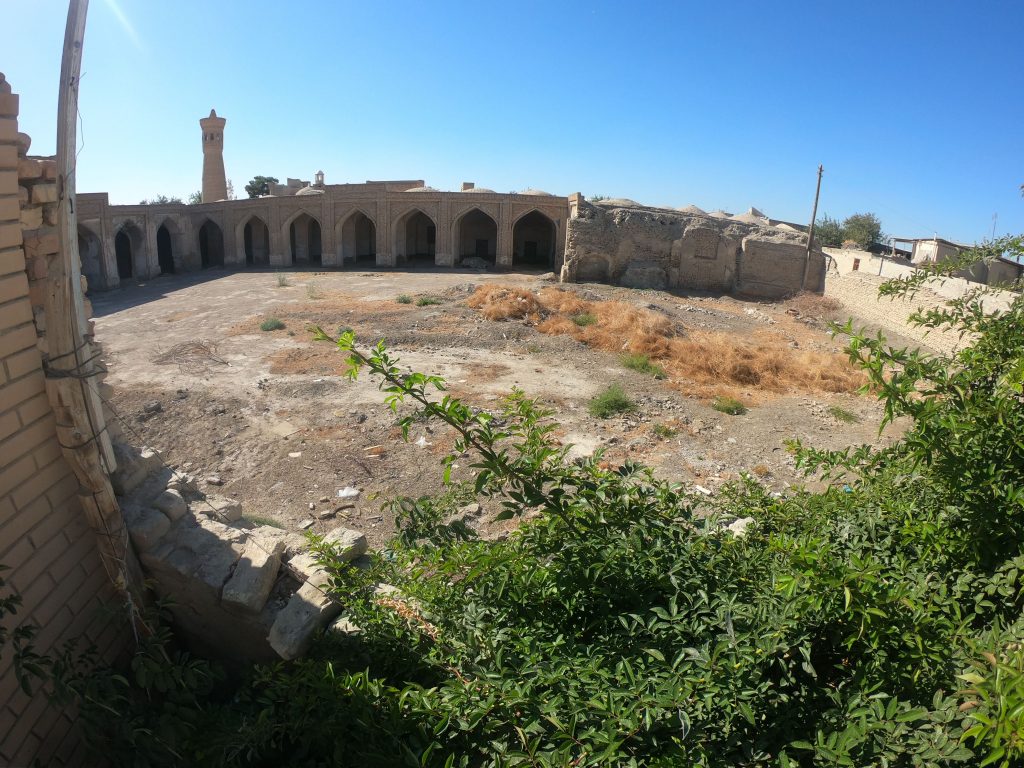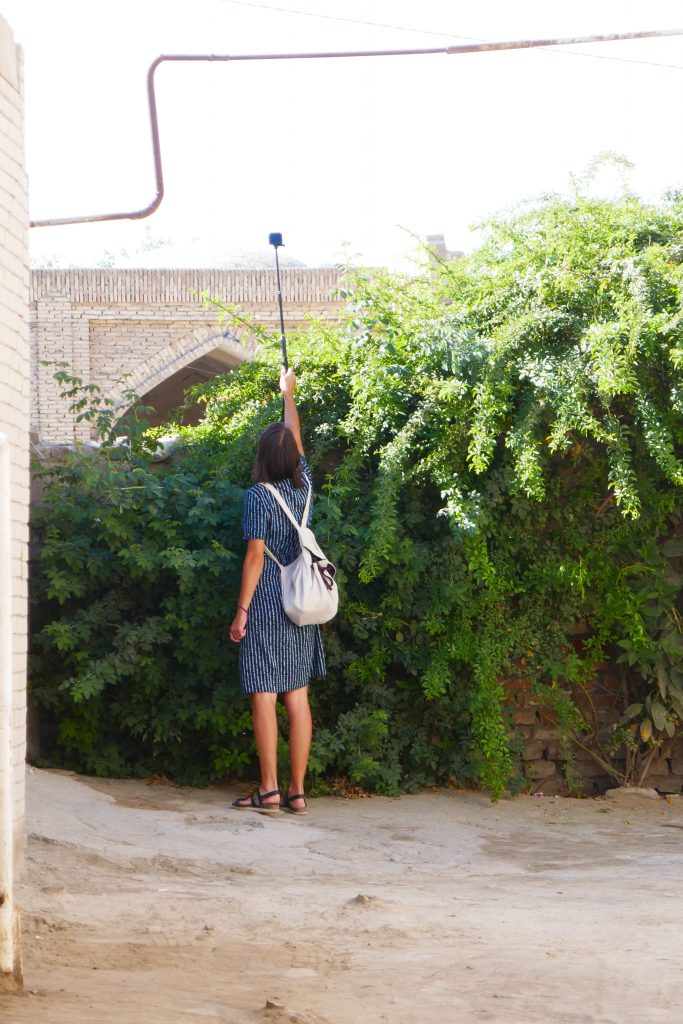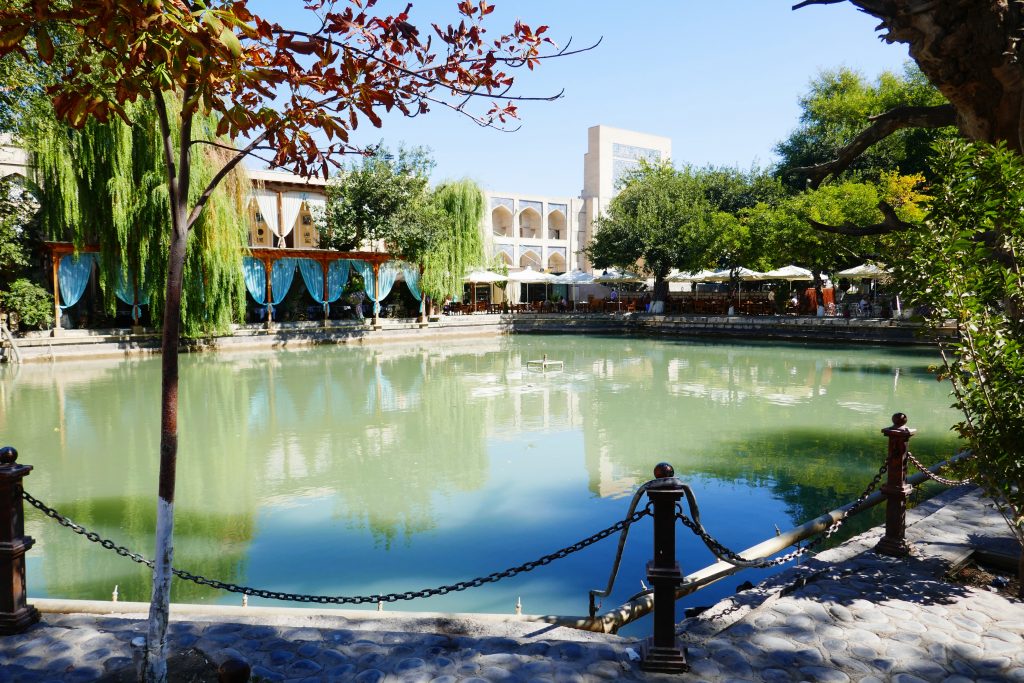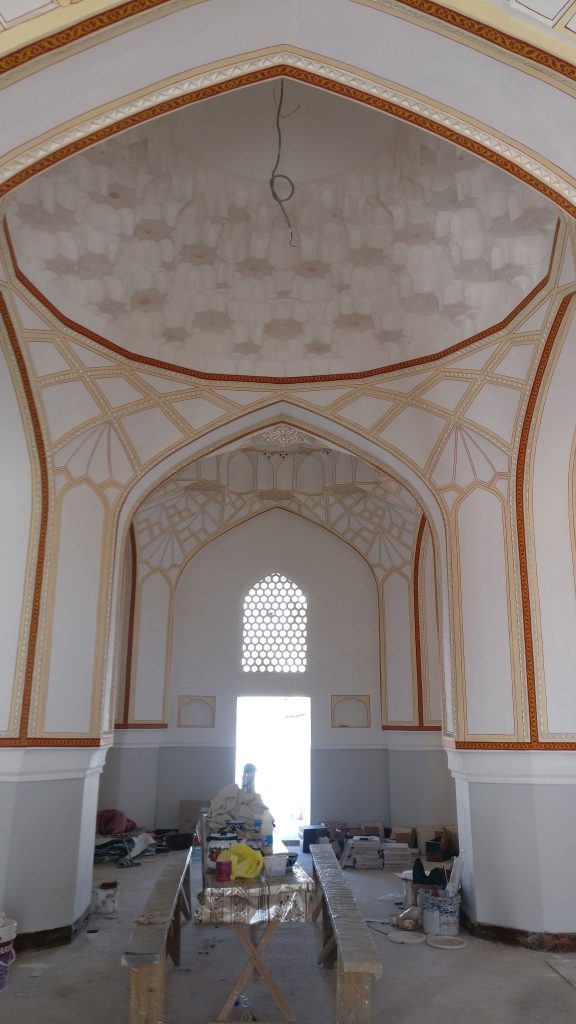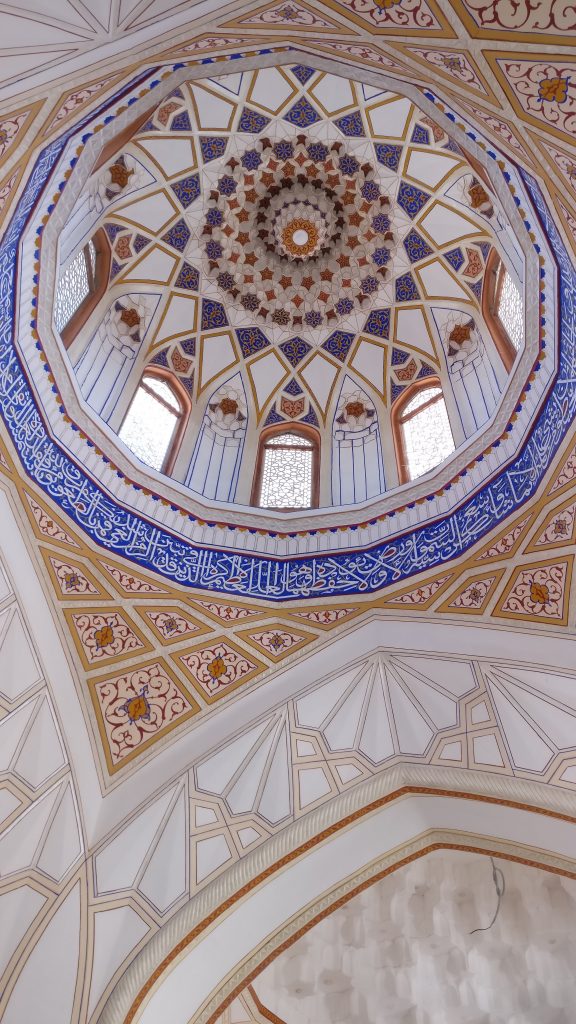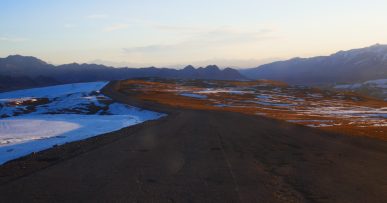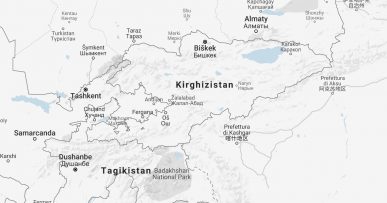Bukhara was our first stop in Uzbekistan, right after our intense experience in Turkmenistan! There, we were thrown into a bubble made of tourist shops, tourist police, and tourist info centres. We were not used to it and we didn’t particularly like it, to be honest. Despite this, we liked the city and its beautiful buildings which are spread everywhere both within the pedestrian area of the old town / Registan and out of it. Among those buildings, the old madrasas (religious education institutions), the main mosque and the minaret are surely the most remarkable. The majority of those have been renewed and are now full of tourist shops, but few of them are still authentic and empty.
Below, you can read about the following (click on the section of interest):
- The history of Bukhara
- Self-made tours you can take in the city in order to make the best out of it
- Some useful tips to survive and save money in the city as well as in Uzbekistan.
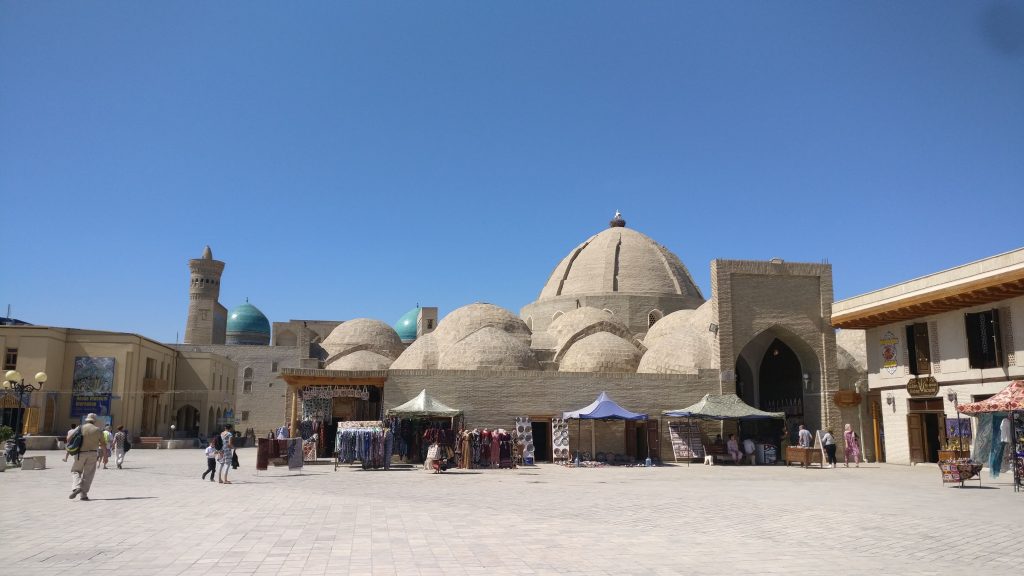
A brief history of Bukhara
Located on the Silk Road, Bukhara has long been a centre of trade, scholarship, culture, and religion; the city itself is about two and a half thousand years old. It entered history in 500 BC as a vassal state or satrapy in the Persian Empire. Later it passed into the hands of Alexander the Great, the Hellenistic Seleucid Empire, and the Kushan Empire. During this time, Bukhara functioned as a cult centre for the worship of Anahita, thus, approximately once a lunar cycle, a trade festival took place in the city to assure the fertility of land. As a result of the trade festivals, Bukhara became a centre of commerce. Trade accelerated along the Silk Road after the Han dynasty (206 BC – 220 BC) pushed back the northern tribes to secure this key trading route. The already prosperous city of Bukhara then became the logical choice for a market. The silk trade itself encouraged the rapid growth of the city which ended after the fall of the Kushan Empire. Coins found in the region demonstrated both its key position along the Silk Road and the presence of two religious movements: Manichaeism and Nestorian Christianity. Indeed, many coins have been discovered with Christian symbols such as crosses.
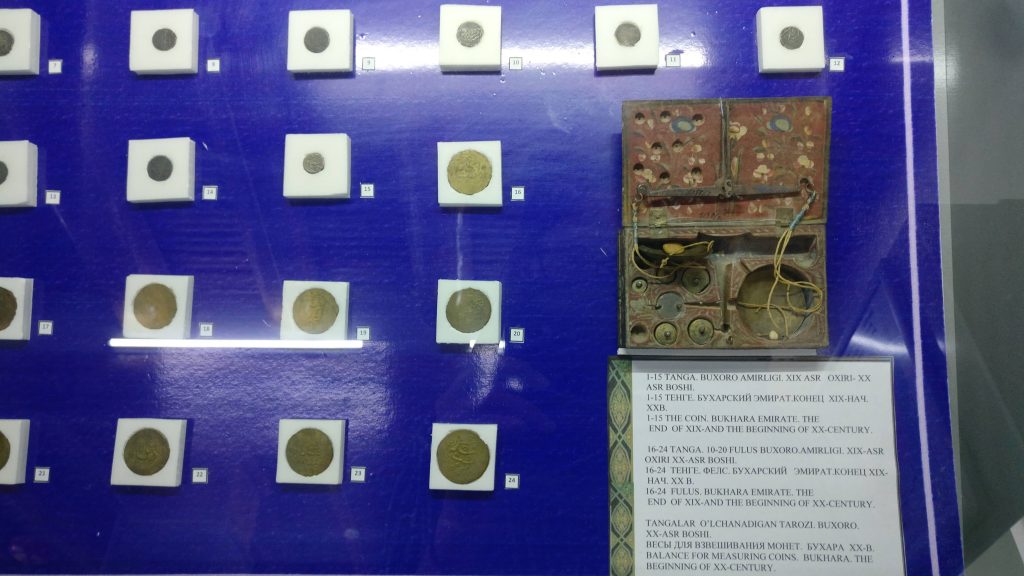
When the Islamic armies arrived in 650 AD, they found a multi-ethnic, multi-religious and decentralised collection of peoples, ruled by Bukhar Khudahs (“Lords of Bukhara”). The Arabs did not truly conquer Bukhara until after the Battle of Talas in 751 AD. Islam slowly took root and eventually became the dominant religion, as it is to the present day.
In 850 AD, Bukhara became the capital of the Samanid Empire, which brought about a revival of Iranian language and culture after the period of Arab domination. That was the golden age of Bukhara: it became the intellectual centre of the Islamic world and many illustrious scholars lived and worked there. In 1005 Bukhara was included into the state of Karakhanids. Karakhanid ruler Arslan Khan ordered the building of a religious complex, Po-i Kalyan or Poi Kalon, including a mosque and the most beautiful minaret in the Islamic world, the Minora-i Kalon.

Genghis Khan besieged Bukhara for fifteen days in 1220. According to Juvaini, a Persian historian, he chose a moderate path between mercy and punishment because the population readily submitted while the garrison in the citadel resisted. For instance, he destroyed the religious complex but the minaret was kept safe. To curtail the power of the local people, the Mongols sent Han Chinese to serve as administrators over the Muslim population in Bukhara. At the same time, they sent Muslims to serve as administrators over China. After Genghis Khan’s death, his son Chagatai and his descendants ruled Bukhara until the emergence of Timur, also known as Tamerlane, at the end of the 14th century. The most remarkable one was Ulugh Beg Mirza (Gengis Khan’s grandson) who was also a mathematician and astronomer. Under his rule, he built the Ulugh Madrasa in 1417-20 both in Bukhara and Samarkand, transforming the cities into centers of learning in Central Asia.
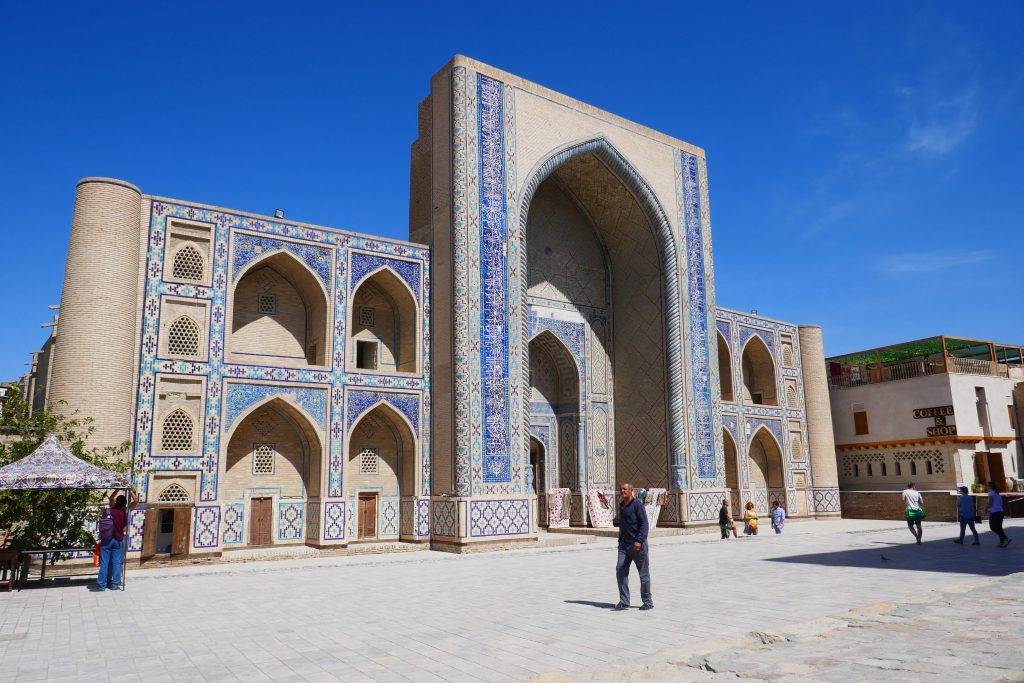
During the 16th century, the Khanate of Bukhara emerged and reached its greatest extent and influence under its last Shaybanid ruler, Abdullah Khan II (r. 1577–1598). In 1740 it was conquered by Nadir Shah, the Shah of Iran. After his death, in 1747, the khanate was controlled by the descendants of the Uzbek emir Khudayar Bi and under his descendant Shah Murad, the khanate became the Emirate of Bukhara in 1785.
In that time, Bukhara played a role in The Great Game between the Russian and the British Empire. Charles Stoddart and Arthur Conolly, two British officers, were imprisoned there by the Emir in 1838 and 1841 respectively, first thrown into a bug pit and then beheaded outside the Citadel in 1842. Joseph Wolff, known as the Eccentric Missionary, escaped a similar fate when he came looking for them in 1845.
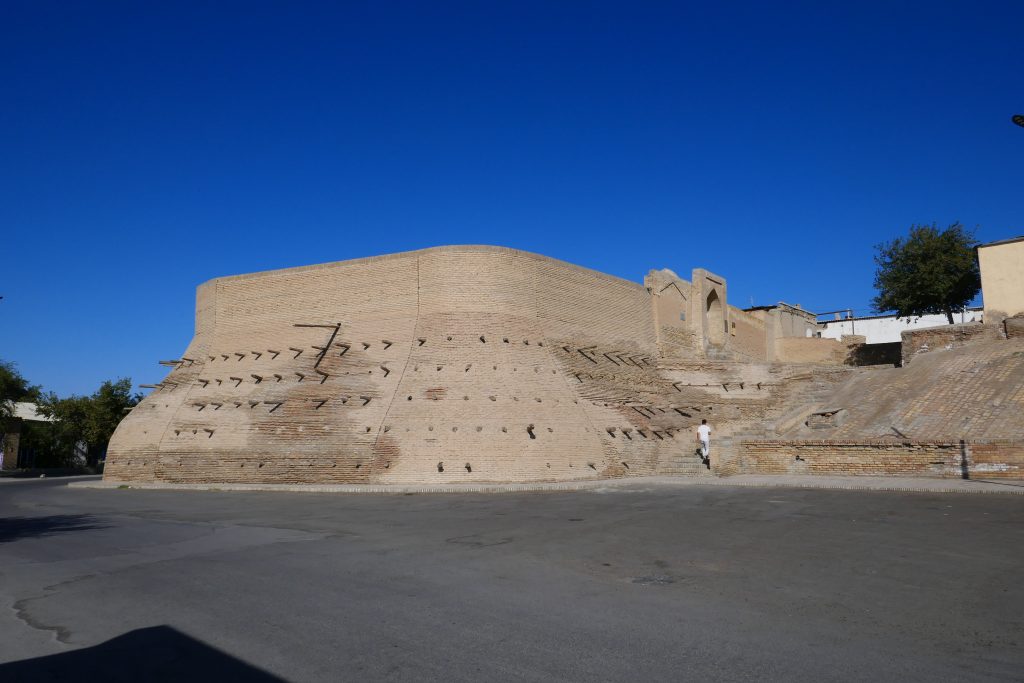
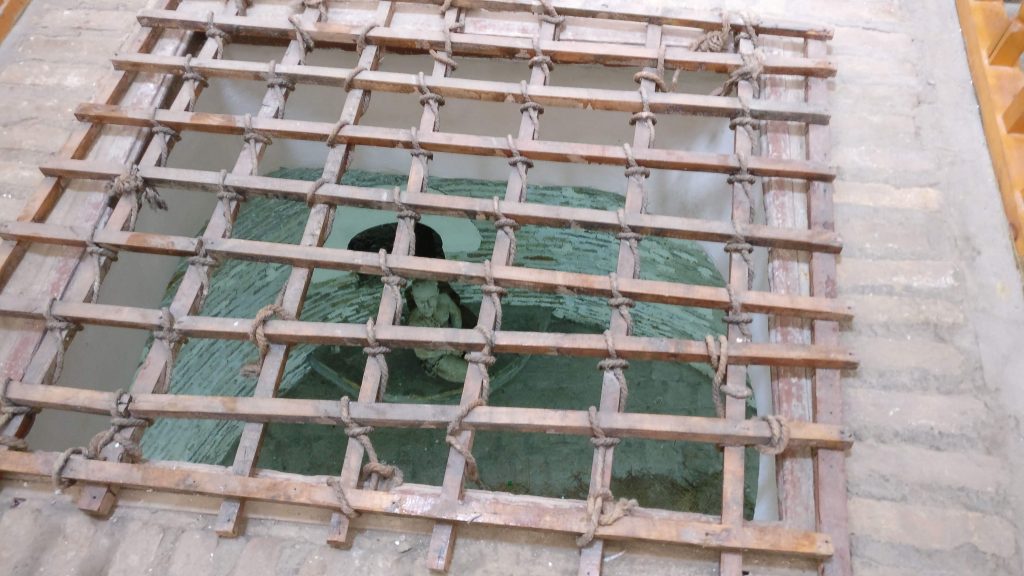
In 1868, the emirate lost a war with Imperial Russia, which had aspirations of conquest in the region. Russia annexed much of the emirate’s territory, including the important city of Samarkand and, in 1873, the remainder became a Russian protectorate. It was disestablished in 1920 by the Bolsheviks and replaced with the Bukharan People’s Soviet Republic. It existed until 1924, when the city was integrated into the Uzbek Soviet Socialist Republic. Today, the territory of the defunct emirate lies mostly in Uzbekistan, with parts in Tajikistan, Turkmenistan and Kazakhstan.
What to see in Bukhara
Visiting Bukhara is very simple: you just need to walk around and you will keep seeing amazing buildings everywhere. We recommend to stay there for three days to be able to walk also out of the old town and see the new town where local people live.
We stayed at Silk Road Guesthouse in the old town and we liked it. The lady was very welcoming (but don’t wake her up in the afternoon..she won’t be that welcoming!) and a good cook. We had our private room and shared bathroom, but no people to share it with, unfortunately.
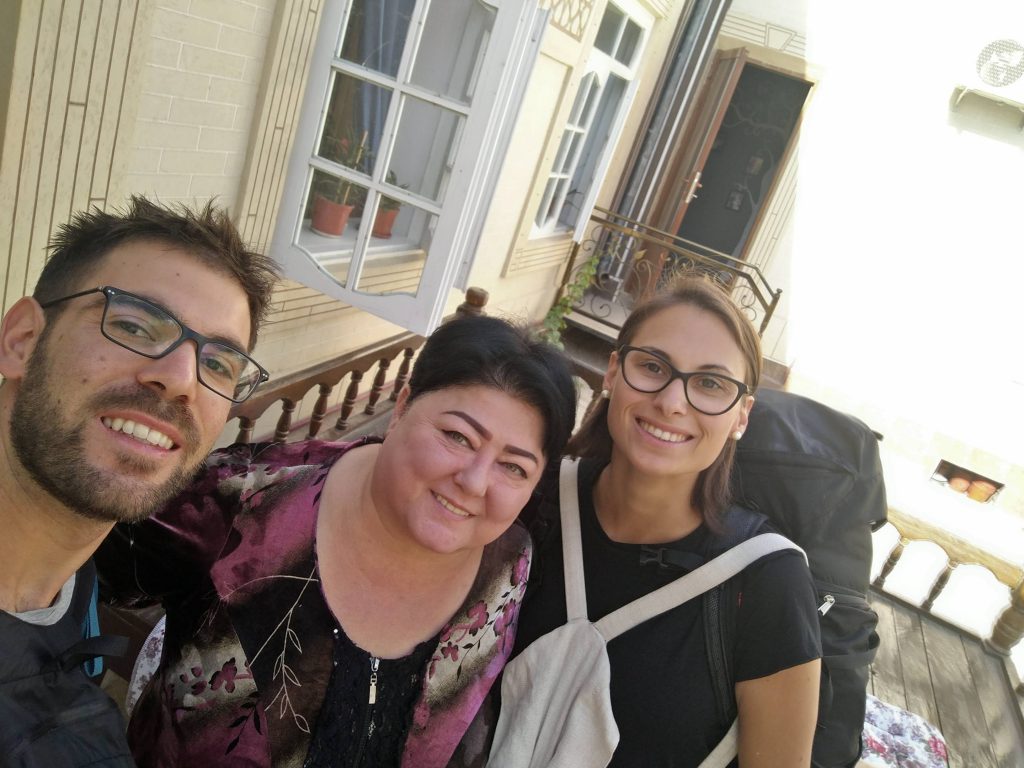
The Guesthouse is five minutes walking to one of the two main squares of the old town: Lyabi Hauz, which is characterized by a squared pool (hauz) in the middle – one of the few left of the many which used to characterize the city – and three madrasas. Two of those could be visited free of charge and were full of tourist shops inside; the other one was closed for renovations.
Walking towards the covered bazar, we stopped to visit Mechet Magak-i Attari mosque which is said to be the oldest one and has got a carpet museum inside (10,000 som / 5,000 som student ticket). It’s better from the outside than the inside, but worth a visit.
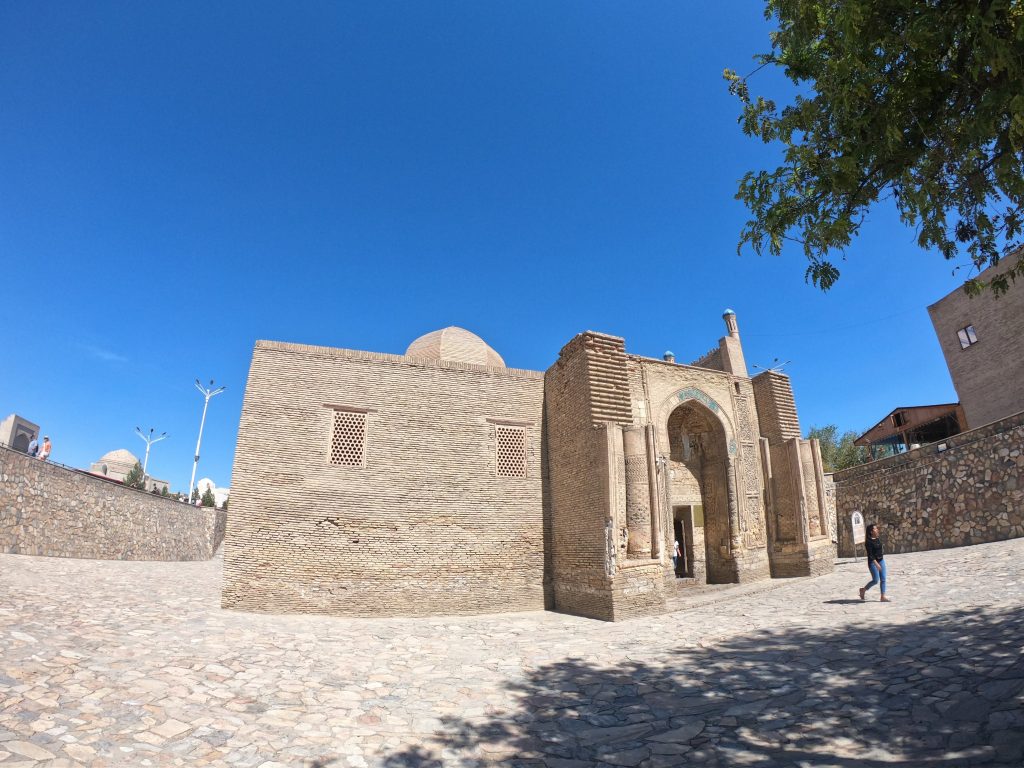
Then, we continued crossing the covered bazar and ended up in another square where we visited Mirzo Ulugbek madrasa and Abdul Aziz Khan madrasa: their facades are very beautiful and well renovated; we paid a ticket to get in as there are two little museums, not very remarkable.
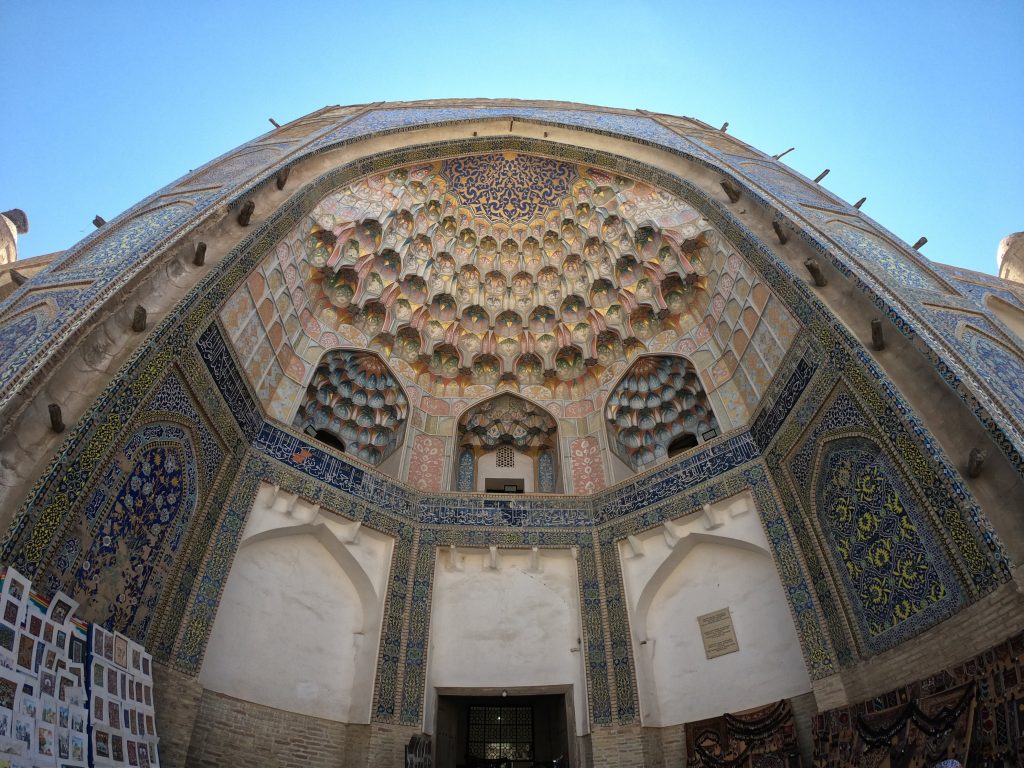
Leaving them at our back, we continued till the other main square of Bukhara where there are the famous minaret Kalon, Poi Kalon mosque, and Mir-i Arab madrasa. The last one is still working and can’t be visited; you can access only the entrance and spy into the garden. However, walking on its side, we saw an open door and properly looked inside. The minaret is amazing during the day, but it’s stunning at night when the lighting makes its decorations look sewed on it.
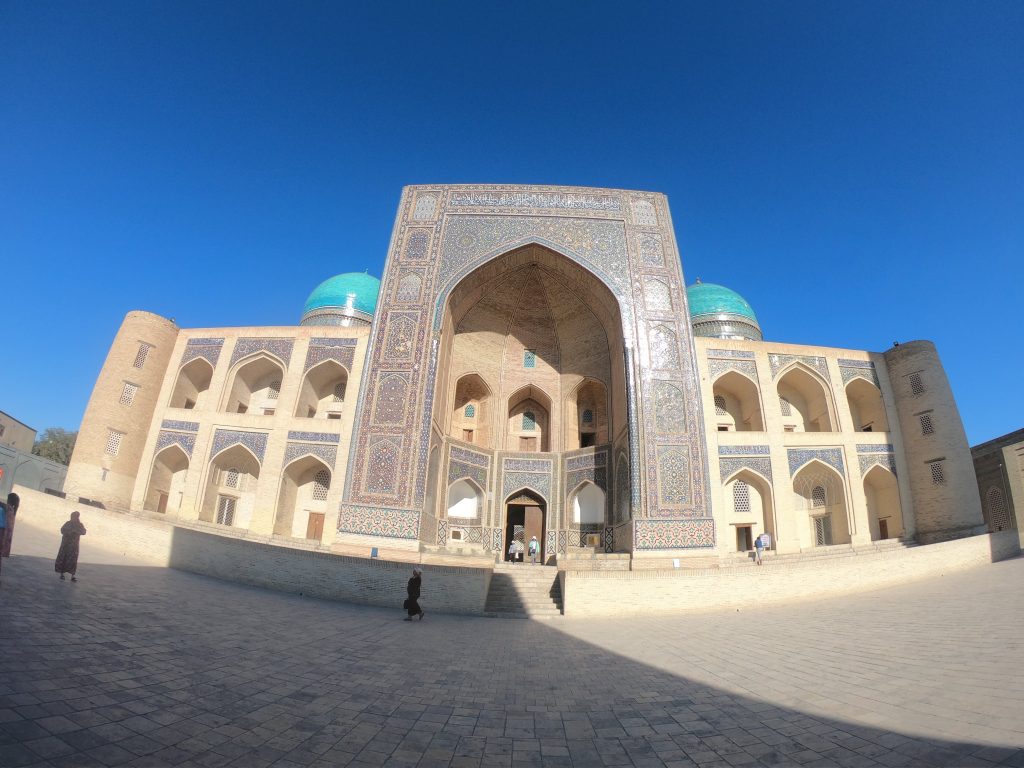
Poi Kalon mosque is extremely beautiful! It was completed in 1514 where originally was built the first mosque by Arslan Khan, next to the minaret. It is a huge building which was made to compete with the greatness of Samarkand.The roof of the galleries encircling the mosque’s inner courtyard has 288 domes resting on 208 pillars. Facing the courtyard is a tall tiled Iwan portal, for entry to the main prayer hall. The mosque is surmounted by a large blue tiled dome. It is said it can guest 100,000 people and it reminded us of the amazing mosques in Iran.
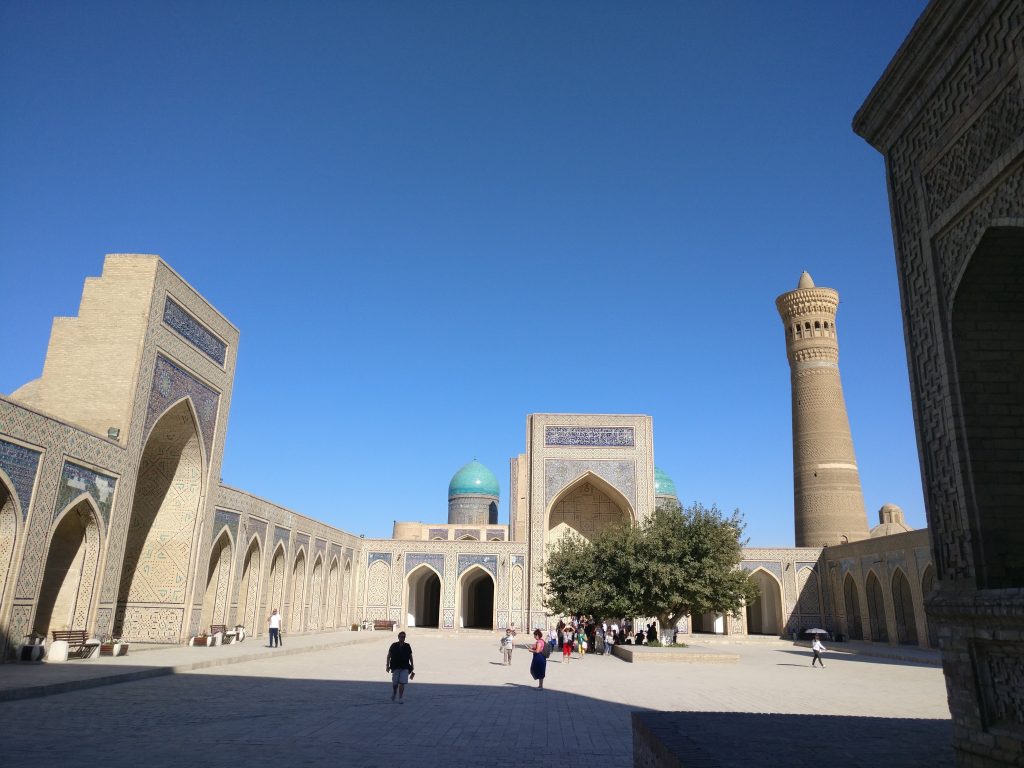
The following day we continued our visit of the city going to the Ark. That is supposed to be the oldest part of the old town but it looks modern due to its renovations. It costs 30,000 som but it doesn’t really worth the price. It’s basically a museum and, in our opinion, few parts were interesting.. also, the audio guide is not working very well.. anyway, once there, do you want to miss it? Much better is the Zindon prison, where you can see the bug pit where the Brits were kept – see the history part of this article.

Opposite the Ark, there is the Bolo Hauz mosque characterized by a squared pool and amazingly decorated wooden ceilings. From there we walked to the bazar, colourful and lively as always in Central Asia and then through a nice park in order to reach the Samanid mausoleum. This is a must-see due to it’s unique decorations.
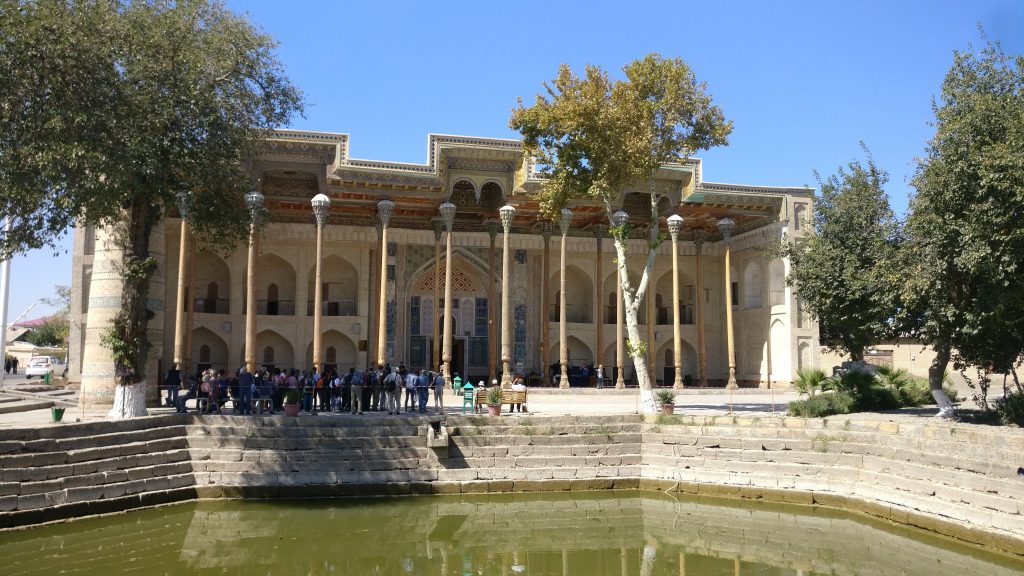
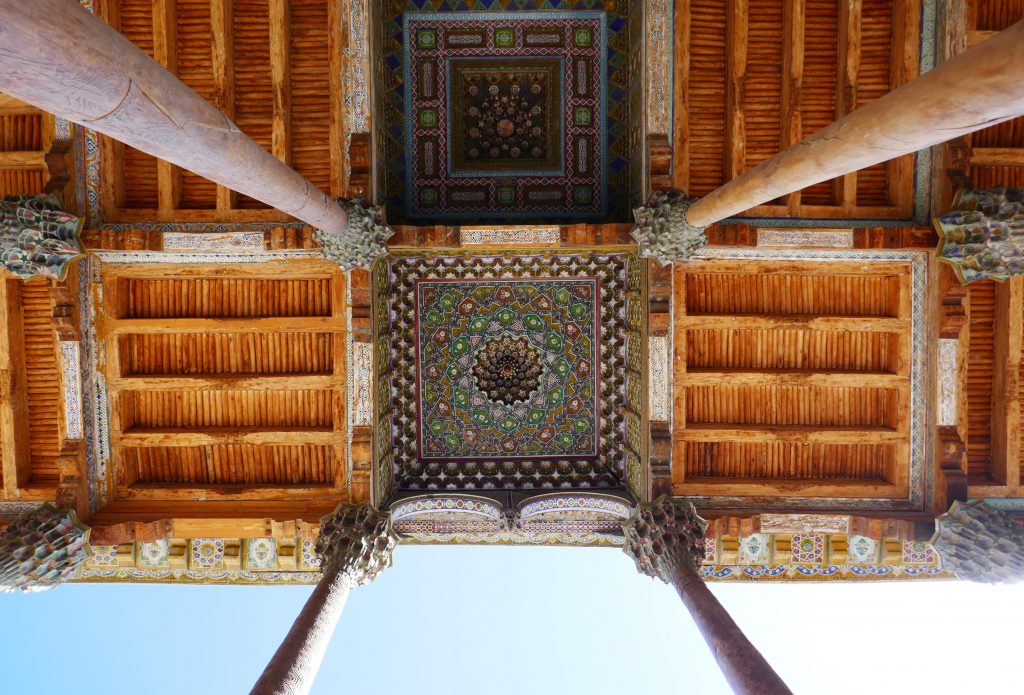
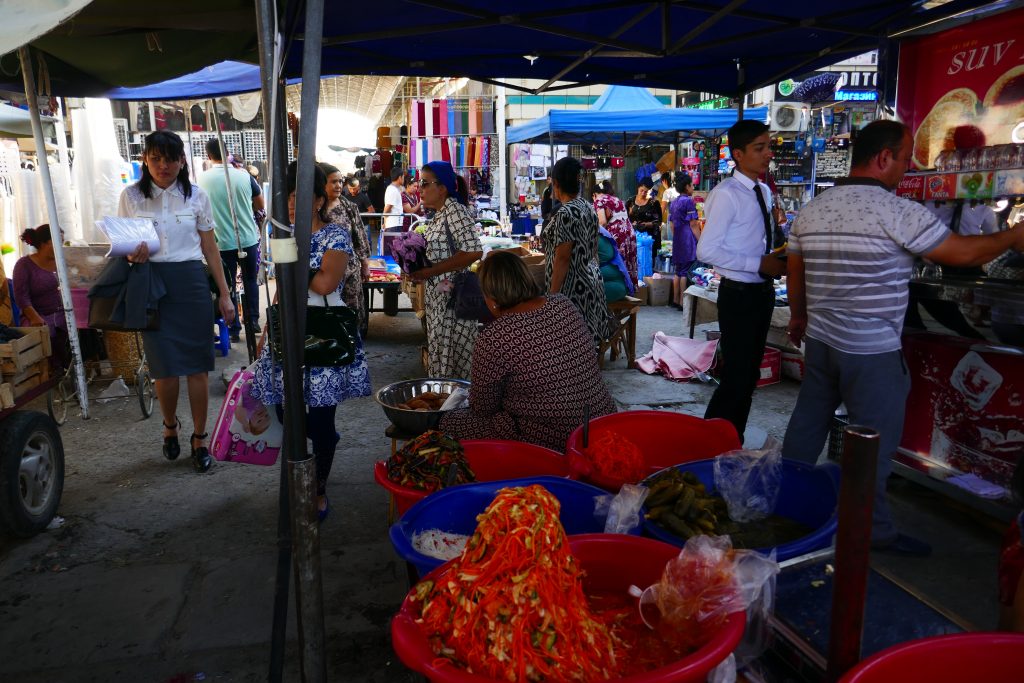

On our way back, we were surprised by seeing other two madrasas facing each other! Those looked older and not renovated, thus more interesting to us. We could enter one, the Modar-i Khan madrasa, and we finally found an authentic environment with no tourist shops. We really liked it.
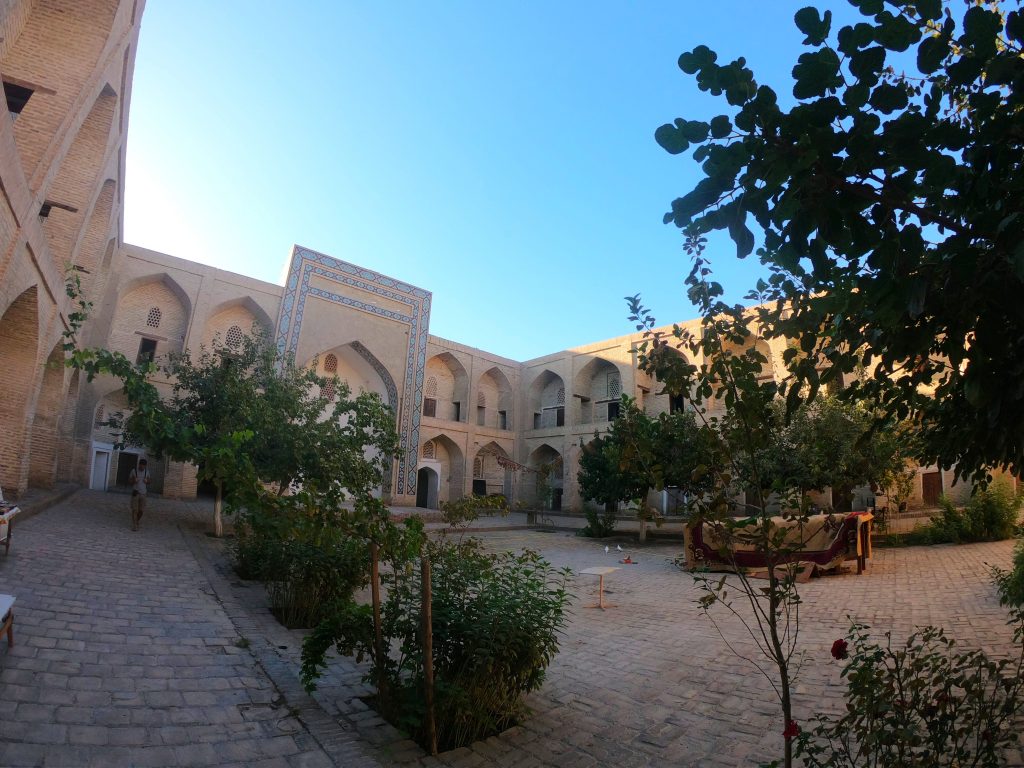
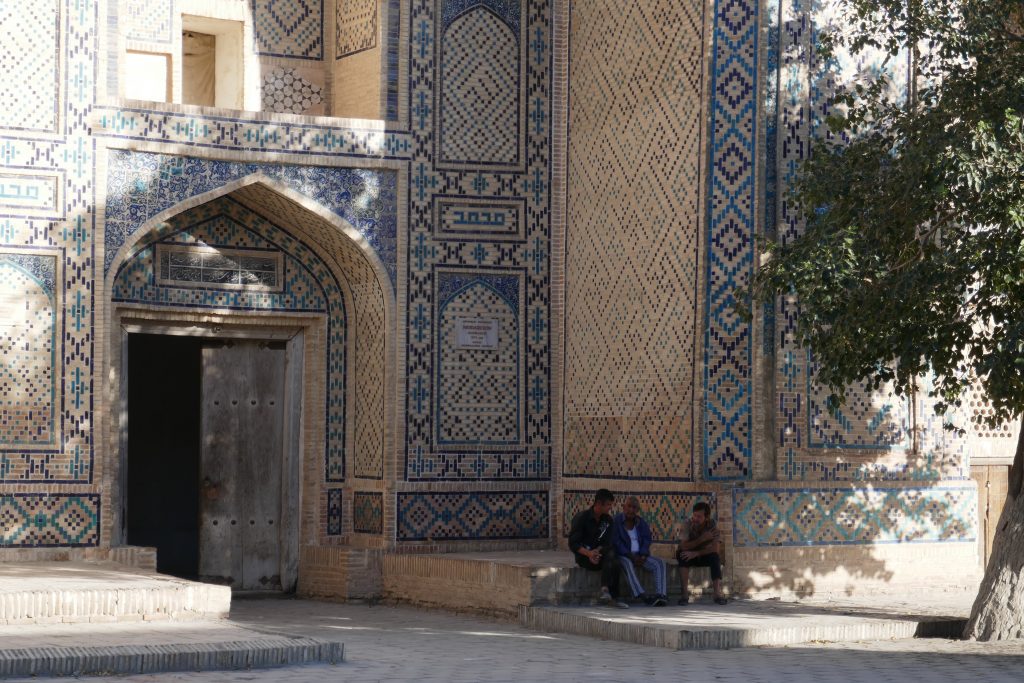
Another nice surprise was the Magori Kurpa mosque. It was actually under renovation and closed to the public but we were invited to enter. What an amazing building! The young artisans were giving it a new, shining life but with respect to the old building. We were explained that every time an old building is renovated, the decorations are remade the same with vivid colors and an authentic detail is left visible. We could see it clearly there, they were actually leaving an entire dome as it was authentically, and we would have noticed it in any other building from then on.
- Renovations in Bukhara, and in Uzbekistan in general, were issued in 2010 by a state programme which is going to last till 2020 and are strictly regulated by UNESCO in order to ensure the integrity and characteristic elements of monuments (see https://whc.unesco.org/en/list/602/ for more details).
On our third day we visited Chor Minor and walked in that area, the new city. We also met our friend Maris to have lunch together and share our experiences in Turkmenistan!
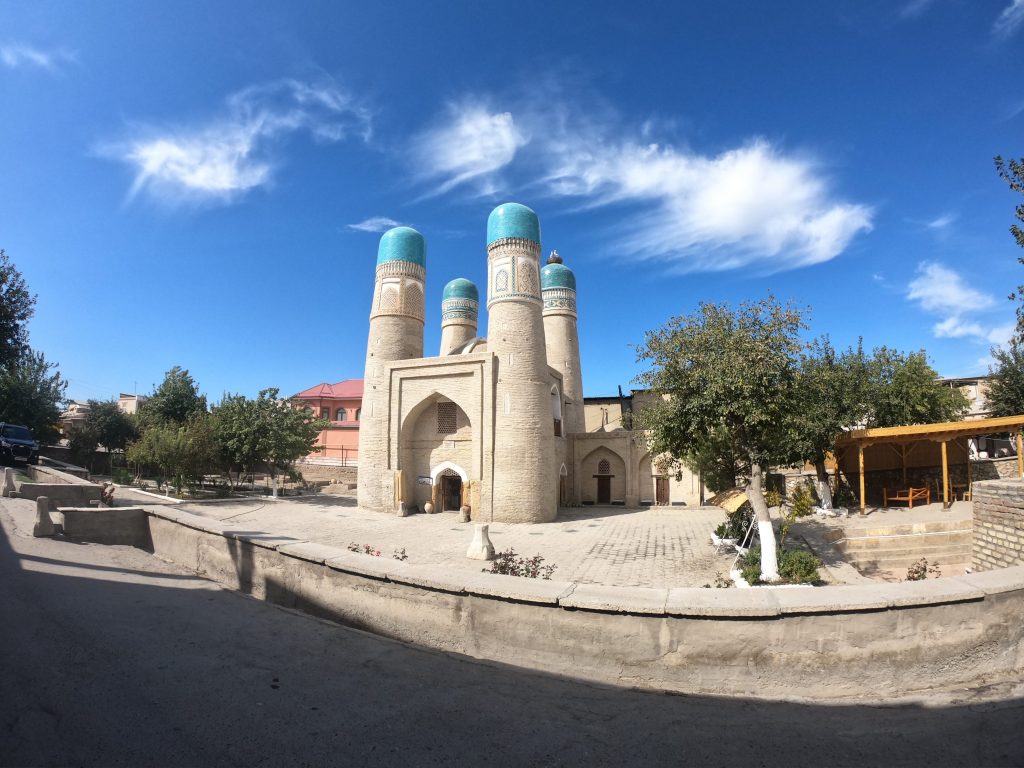
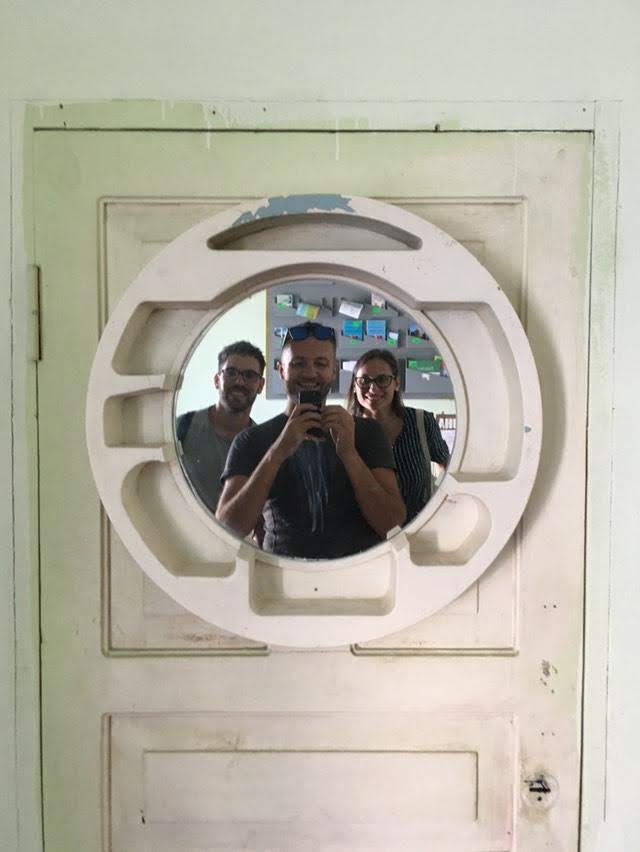
On our fourth day, we left Bukhara to Khiva! We went to the shared taxi station (paying three times more than the usual price for a taxi..but it was our second time, we didn’t know much about pricing) and there we strongly bargained the price to Khiva getting a ride for 100,000 som. Another stop along the Silk Roads was waiting for us!
For more details about getting around in Uzbekistan and costs, click and read our article 2 Weeks in Uzbekistan: Public Transport and Costs.
Useful tips
- MasterCard is hardly accepted in Uzbekistan. In Bukhara you can withdraw at Asaka Bank. If you have a VISA, you are ok.
- Ask your registration sleep to your hotel! You need it to exit the country.
- Coffee House (in the old town) and Shining Café – Sim Sim Cafe on maps.me – (in the new town) are good and cheap places to eat. Overall, along Bakhoaddin Nakshband street there are many local and cheap restaurants. 25,000/ 30,000 som is a reasonable price for a meal.
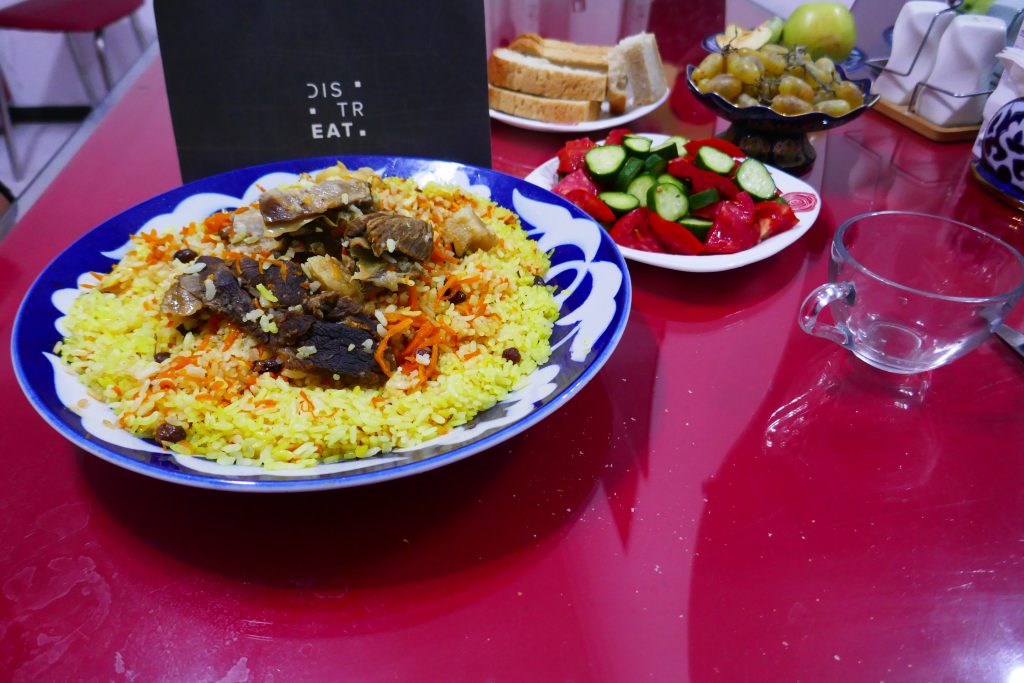
- Buy an Ucell sim card if you want to use the internet; WiFi networks are not reliable.
- Send postcards from the post office, it costs half the price compared to the tourist post desks.
- Taxi should cost 10,000 som for 5 km.
- Get lost in the old town as well as the new one!
